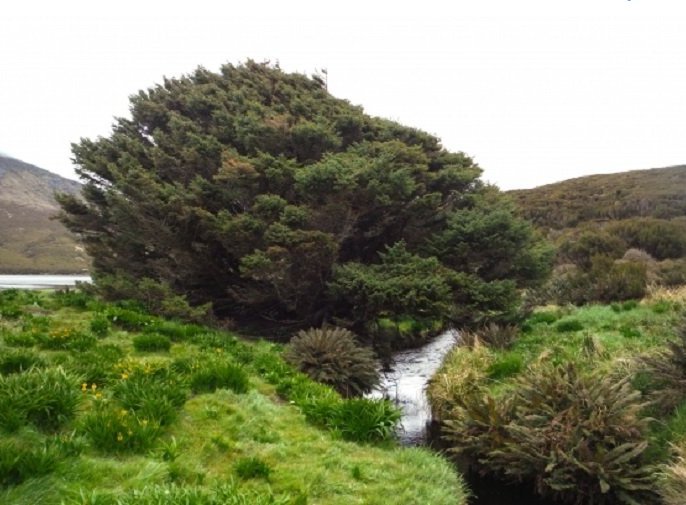
World’s ‘loneliest tree’ may have answers to climate change

Researchers believe the Sitka spruce, the world’s loneliest tree on the uninhabited Campbell Island in New Zealand, may have answers to climate change.
Nine metres tall in height, the 10-year-old spruce holds the Guinness World Record title for the “remotest tree” on earth, and is the only tree on the island, situated 700 km south of New Zealand in the Southern Ocean (Antarctic Ocean). Its closest neighbor is 250 km away on the Auckland Islands.
Radiocarbon science leader at GNS Science, Dr Jocelyn Turnbull, says the tree could be a valuable tool to understand the uptake of carbon dioxide in the Southern Ocean.
Turnbull is leading a government-funded study that is a component of the Antarctic Science Platform and which aims to find more on the effects of Antarctica on the Earth’s system.
“Of the carbon dioxide that we produce from burning fossil fuels and put into the atmosphere, only about half stays there and the other half goes into the land and the ocean,” Turnbull told The Guardian.
Stating that the Southern Ocean was one such ‘carbon sink’, Turnbull said that the ocean has “taken up about 10 per cent of all the emissions” that the planet has produced over the last 150 years.
Turnbull and her team have collaborated with New Zealand’s Deep South National Science Challenge, the Antarctic Science Platform and the National Institute for Water and Atmospherics to understand the nature of carbon concentration in the Southern Ocean.
The researchers are now posed with two questions – if global warming will get a massive acceleration once the carbon sinks get saturated or if these sinks be instead used to assimilate more carbon and help reduce global warming.
While current studies have shown that the uptake of these sinks are increasing, Turnbull and her team is using (tree) rings of the Sitka spruce to measure carbon dioxide concentration in the atmosphere.
“Plants, when they grow take carbon dioxide out of the air by photosynthesis and they use that to grow their structures and the carbon from the air ends up in the tree rings,” she told The Guardian.
The Sitka spruce has been a helpful find as it has grown a lot faster than its cousins in densely-wooded regions.
“It’s grown a lot faster than anything else (in that region) and the rings are bigger and easier to separate out and get a record form,” Turnbull said.
The results of the study are yet to be published.
The Sitka spruce is said to be planted by Lord Ranfurly, the then governor of New Zealand in the early 1900s and hence has been named the Ranfurly tree after him.

